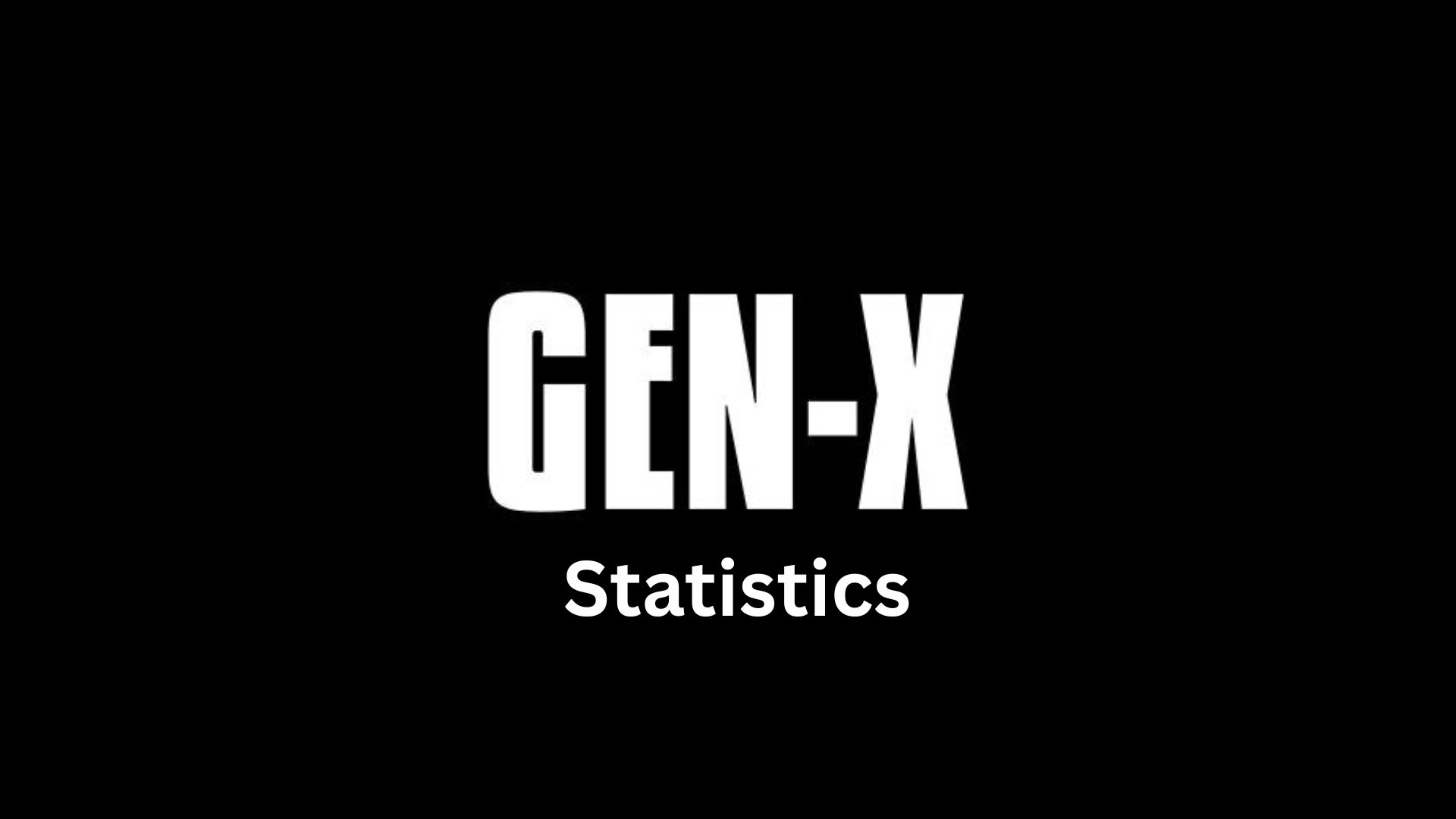Digital Twin Statistics By Spendings, Revenue And Market Size
Updated · Sep 06, 2024

Table of Contents
- Introduction
- Editor’s Choice
- Adoption Of Digital Twins In Real Estate Markets
- Digital Advertising Spending Increase In The United States
- Rise In The Development Of Digital Media Budgets
- Rise Of Extended Reality Vendor Shipment
- Digital Spending In The Middle East And North Africa
- Categories Of Digital Advertising Spending In Europe
- Extended Reality Market Size
- Spending On Digital Transformation
- Global Digital Music Revenue Increase
- Revenue Of Digital Ad-Selling Companies Worldwide
- Digital Advertising Spending Worldwide
- Popular Digital Payment Brands In The UK
- Top E-commerce Platforms In Latin America
- Advertising Revenue Of Digital Vs Print Newspapers In Norway
- Approaches And Difficulties With Digital Technologies In France
- Low Digital Usage In France
- Share Of Users Using Digital Payment Tools In Different Countries
- Share Of Nintendo In Annual Sales
- Digital Twins Statistics
- Conclusion
Introduction
Digital Twin Statistics: A digital twin is a concept that showcases the versatility of virtual recreation and simulation technology. It focuses on creating a digital replica that could be used for various activities, from individual product development to the planning of smart cities. This versatility is intriguing, as it becomes essential to discuss holistically the impact of digital twin technologies on various aspects of the economy and infrastructure. It would be interesting to have a comprehensive idea of the digital twin technology and how it can revolutionize the world.
Editor’s Choice
- According to digital twin statistics, Meta dominates the reality headset market, with a 72% market share as of Q4 2024.
- Digital advertising spending in the USA will reach USD 452.4 billion by 2028.
- Google is the leader in digital ad revenue as of August 2024, with USD 190.5 billion.
- In Europe, digital advertising spending reached 48.3 billion Euros in 2023.
- The extended reality is expected to reach USD 100.77 billion by the end of 2026.
Adoption Of Digital Twins In Real Estate Markets

(Reference: Statista.com)
- Digital twin technology has vast potential in the real estate sector, and real estate industry experts offer various opinions.
- The digital twin statistics show that the level of adoption of digital twins can be divided into five categories: no interest, research, piloting, early-stage implementation, and innovation.
- Among industry experts, 8% have no interest, 26% are researching, 30% are piloting, 22% have early-stage implementation, and 15% are in production.
Digital Advertising Spending Increase In The United States
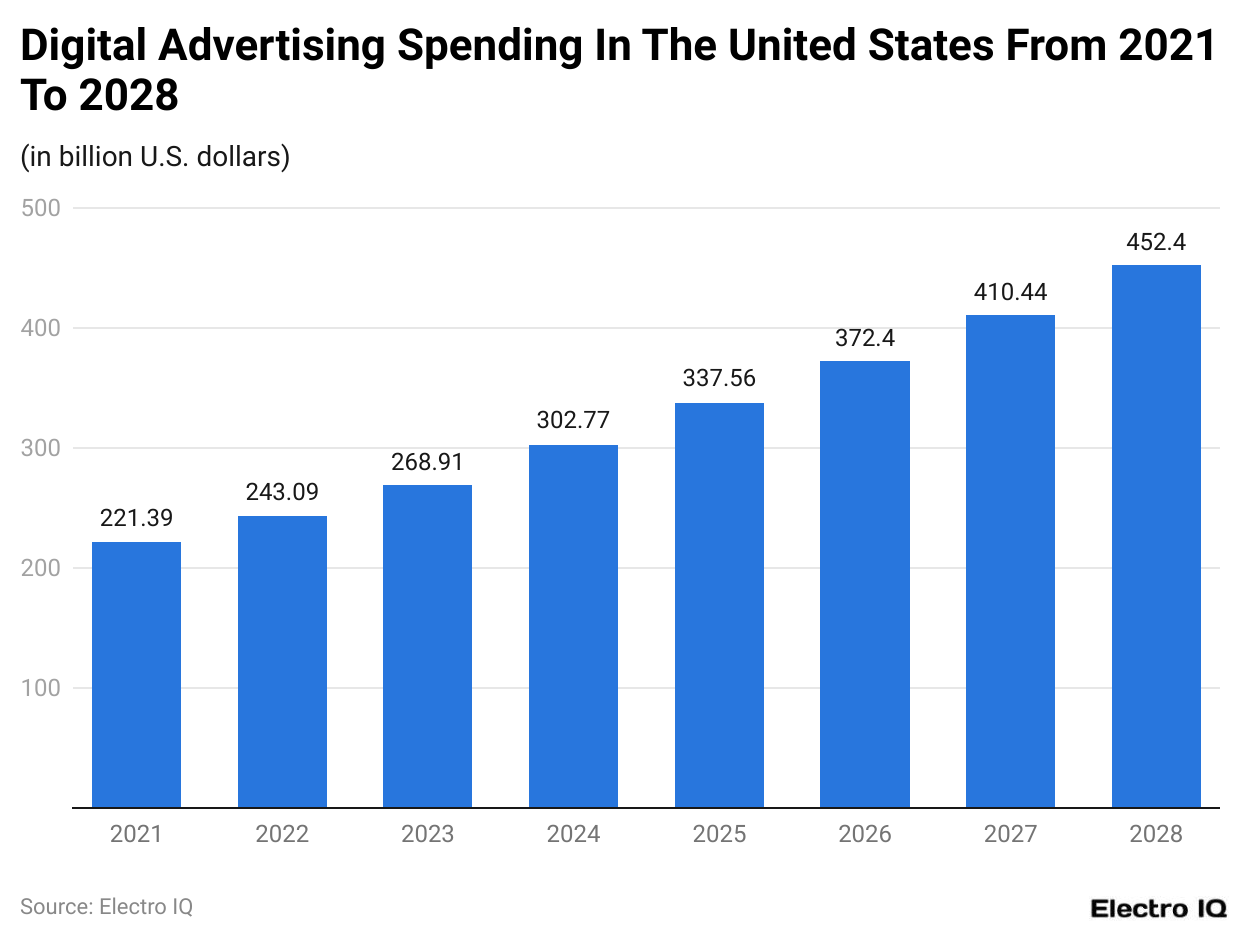
- Adequate digital advertising spending is essential for implementing digital twins.
- The digital twin statistics showcase that in 2023, the digital twin spending in the USA was $268.91 billion in the advertising budget.
- With the rise in popularity of digital twin technology, advertising spending is expected to increase, as shown in the graph. By the end of 2028, digital advertising spending will be $452.4 billion.
Rise In The Development Of Digital Media Budgets
(Reference: Statista.com)
- With the rise of digital technology, there has been a significant increase in digital media budgets altogether.
- As shown in the digital twin statistics, retail media has significantly increased, with 25% representing a significant increase and 35% representing a slight increase.
- Accordingly, with the rise of streaming media, 22% of respondents conveyed that digital media budgets have significantly increased.
- Collectively, 35% of the brands said they plan to increase digital media spending significantly.
Rise Of Extended Reality Vendor Shipment

(Reference: Statista.com)
- The extended reality headset provides a digital overall experience to showcase a digital universe. It gives a vision of the digital twin world.
- With the popularity of digital twin technology, extended reality headsets were expected to become more popular.
- The digital twin statistics show that, in Q1 2020, Meta had the highest market share of extended reality headsets, with 34%, followed by DPVR, with 7% and Pico, with 6%.
- However, by the end of Q4 2024, the market share of extended reality headsets will be as follows: Meta will have 72%, Sony will have 15%, and Pico will have 4%.
Digital Spending In The Middle East And North Africa
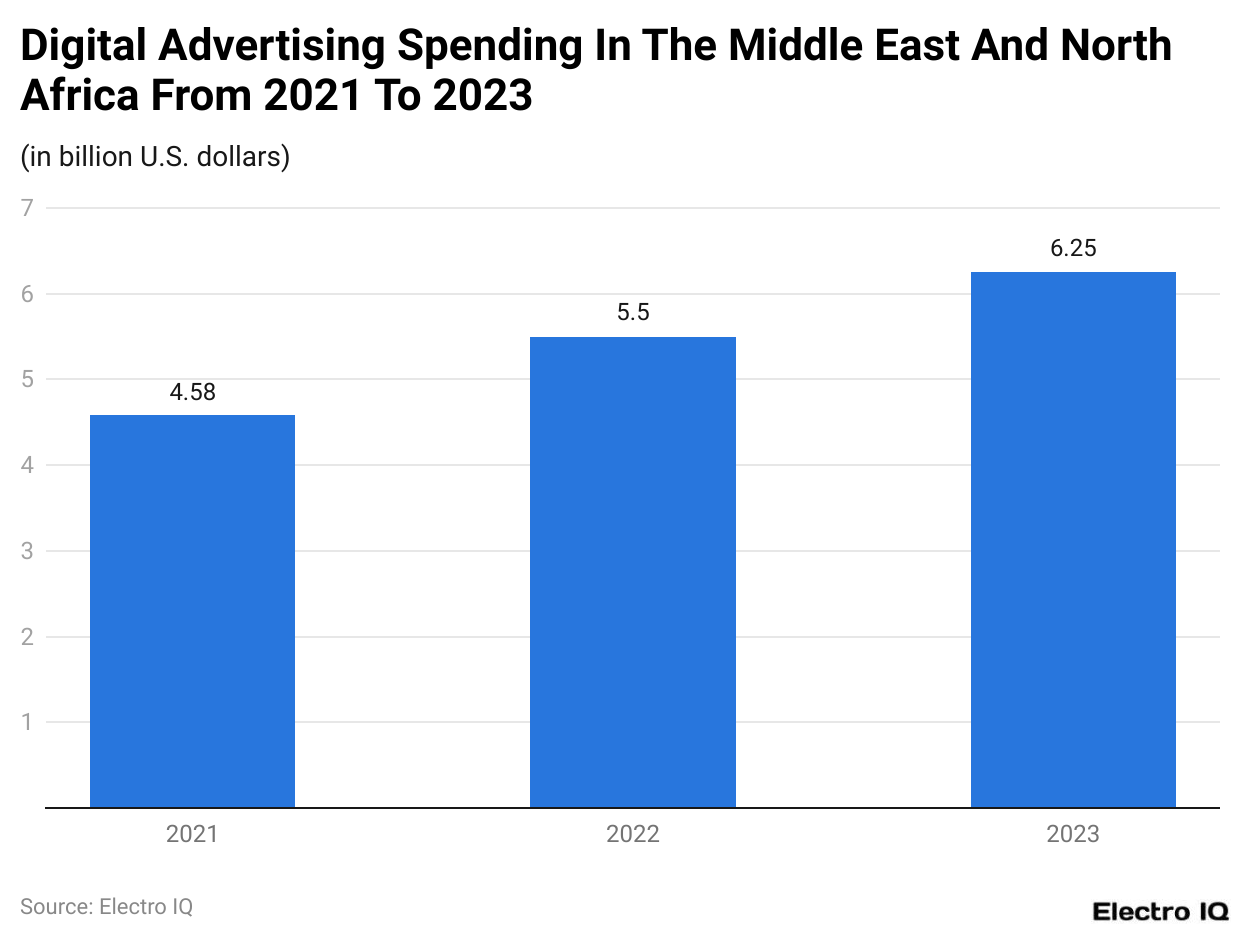
(Reference: Statista.com)
- In recent years, the Middle East and North African regions have developed significant infrastructure to accommodate digital twin technology.
- Accordingly, there has been an increase in digital advertising in these regions.
- The digital twin statistics show that digital advertising was $4.58 billion in 2021, which increased to $5.5 billion in 2022 and $6.25 billion by the end of 2023.
Categories Of Digital Advertising Spending In Europe

(Reference: Statista.com)
- It would be interesting to review the digital twin statistics to properly understand the categories of digital spending in the European region.
- As of 2023, the spending on display digital advertising was 48.3 billion Euros, followed by 41.7 billion Euros in search and a relatively more minor 6.8 billion Euros in classified and directories.
Extended Reality Market Size

(Reference: Statista.com)
- The digital twin statistics show that the extended reality market is expected to increase significantly in the coming years.
- In 2023, the extended reality market was $41.22 billion.
- By the end of 2026, the extended reality market will be $100.77 billion.
Spending On Digital Transformation

(Reference: Statista.com)
- The overall spending of digital transformation technologies showcases the rising popularity of digital twin technologies.
- The digital twin statistics show that in 2023, the spending on digital transformation technologies was $2.15 trillion.
- Spending on digital transformation technologies is predicted to reach $3.9 billion by the end of 2027.
Global Digital Music Revenue Increase
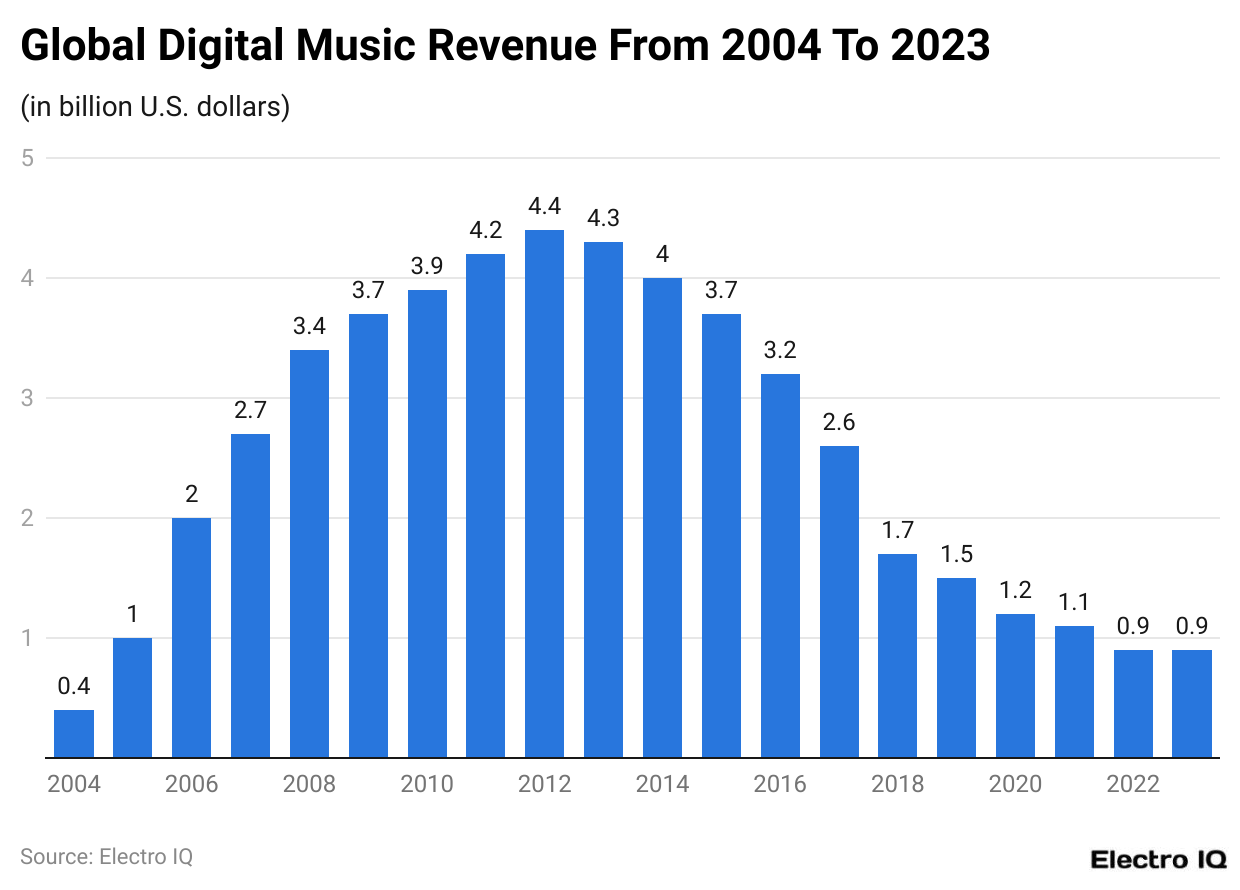
(Reference: Statista.com)
- The music streaming industry has undergone various changes in recent times.
- The digital twin statistics show that digital music revenue peaked at $4.4 billion in 2012.
- As of 2023, the revenue of digital music is a meager $ 0.9 billion.
- This decline in digital music revenue also shows that the public still has varied interests in vintage music methods such as vinyl discs.
Revenue Of Digital Ad-Selling Companies Worldwide

(Reference: Statista.com)
- The robust performance of digital ad-selling companies empowers the digital twin economy.
- The digital twin statistics show that Google has the highest advertising revenue as of August 2024 with $190.5 billion; Meta follows it with $146.3 billion, then follows Amazon with $52.7 billion, and finally comes Byte Dance with $39.9 billion.
Digital Advertising Spending Worldwide

(Reference: Statista.com)
- The digital twin statistics show that global spending on digital advertising has increased substantially.
- In 2014, the global spending on digital advertising was a relatively small amount of $108.47 billion.
- By the end of 2023, the spending on digital advertising had become $415.5 billion.
- It is predicted that by the end of 2026, the spending on digital advertising will be almost $500 billion.
Popular Digital Payment Brands In The UK
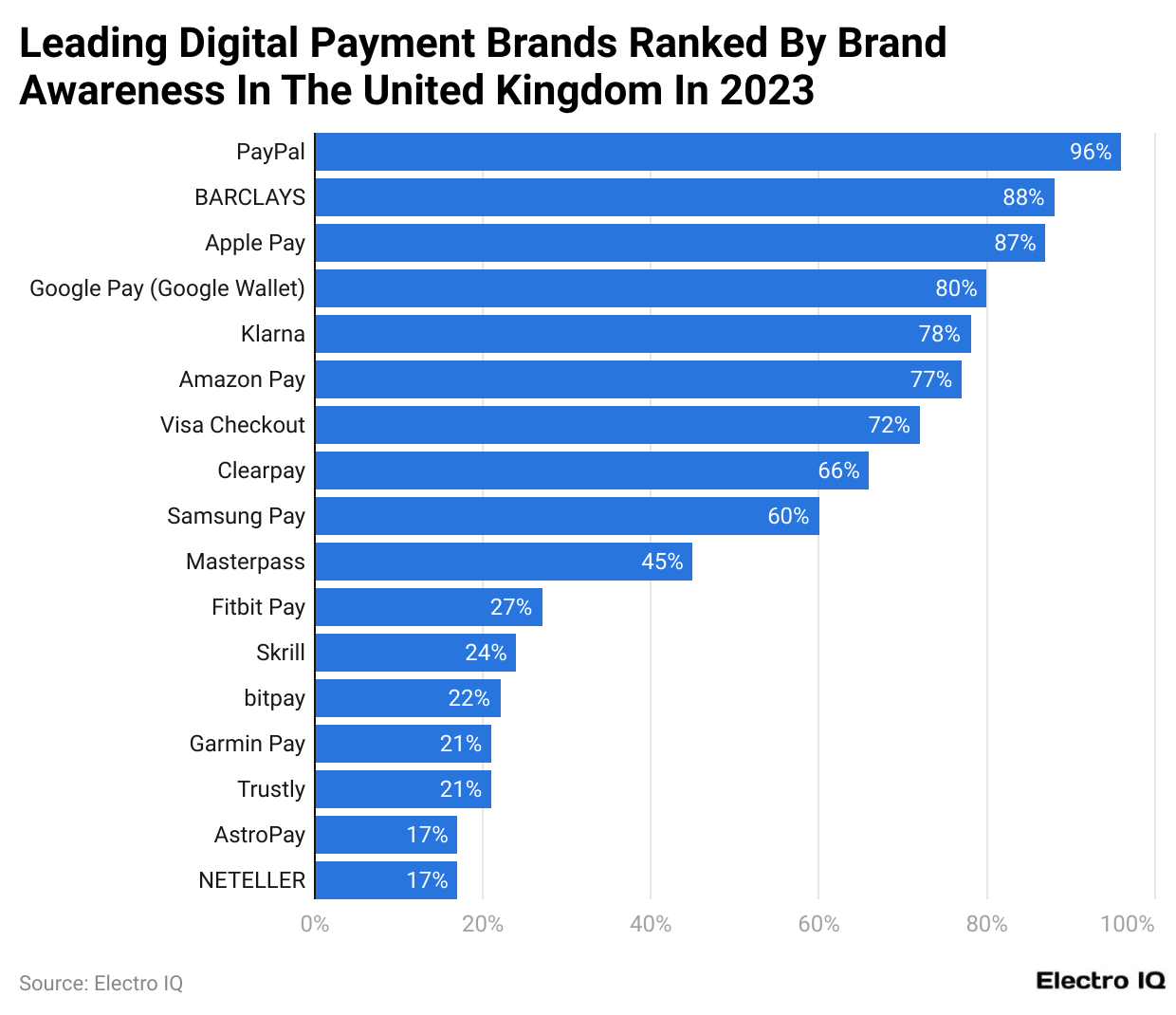
(Reference: Statista.com)
- The popularity of digital payment systems is crucial for the success of a digital twin-based economy.
- The digital twin statistics show that PayPal is the most popular digital payment brand in the UK, with 96% of respondents admitting to using PayPal consistently for payments.
- BARCLAYS, Apple Pay, and Google Pay are other popular digital payment systems in the United Kingdom, with 88%, 87%, and 80% acceptance among the respondents, respectively.
Top E-commerce Platforms In Latin America

(Reference: Statista.com)
- The digital twin statistics have portrayed how the digital media-based economy has been popular in Latin America.
- Mercado Libre is by far the most popular e-commerce platform in Latin America, with a revenue of $625.33 million in digital retail media advertising as of 2023.
- It is followed by Amazon.com br, Magazine Luiza, and Amazon.com Mx, which had revenue of $132.22 million, $110.67 million, and $104.3 million, respectively.
Advertising Revenue Of Digital Vs Print Newspapers In Norway
(Reference: Statista.com)
- Norway is an exciting example for respondents eager to learn more about the rising advertising revenue of the digital economy.
- According to the digital twin statistics in 2014, printed newspapers were quickly more popular, with revenue of 4.97 billion NOK compared to a relatively more minor 1.67 billion NOK for digital newspapers.
- In 2020, revenue was almost equal for both digital and printed newspapers, with digital newspapers grossing 1.82 billion NOK and print newspapers having revenue of 1.88 billion NOK.
- By the end of 2022, digital newspaper advertising revenue was 2.69 billion NOK, significantly higher than print media's 1.64 billion NOK advertising revenue.
Approaches And Difficulties With Digital Technologies In France

(Reference: Statista.com)
- If digital town technology is adequately implemented, it is essential to consider the challenges users face.
- As per digital twin statistics, 13% of respondents have no difficulty using digital technologies.
- 39% of respondents felt they could manage difficulties independently, whereas 26% might seek assistance from their social circle.
Low Digital Usage In France

(Reference: Statista.com)
- Based on digital twin statistics, there have been multiple reasons that have led to its low popularity in France
- 22% of respondents felt that the high cost of devices and their internet subscriptions led them to avoid using digital usage.
- 18% felt that the inadequate need to master digital tools was a significant factor in low internet adoption among the general audience.

(Reference: Statista.com)
- As per digital twin statistics, the share of internet users for digital payment is in different countries.
- In Norway, 79.4% of respondents pay regularly for digital content.
- Mexico, Chile, and Sweden are other top countries, with 78.9%, 76.2%, and 75.6% of the population regularly paying for digital content.

(Reference: Statista.com)
- Nintendo is one of the most popular gaming companies worldwide, and the popularity of this console provides a brief idea of the acceptance of the digital twin economy among the average user.
- According to the digital twin statistics, in FY 2018, Nintendo had a 17.3% market share of all game sales.
- With time, popularity increased, as shown in the graph: Nintendo's market share in digital game sales was 48.2% by the end of 2023, 24.8% in FY 2019, 34% in FY 2020, 42.8% in FY 2021, and 42.6% in FY 2022.
- By the end of FY 2024, Nintendo is predicted to have a 50.2% market share among gaming platforms, signifying its rising popularity among users.
Digital Twins Statistics
Digital Twin technology has grown significantly in recent years, driven by IoT, AI, and data analytics advancements. In 2023, the global market for Digital Twins was valued at approximately $10.9 billion. This technology is increasingly adopted across various industries, including manufacturing, healthcare, and automotive, due to its ability to create accurate virtual models of physical systems. This allows companies to monitor, analyze, and predict the performance of their assets in real time, leading to cost savings and efficiency improvements.
Healthcare is another sector where Digital Twin technology is gaining traction. In 2023, the use of Digital Twins in healthcare was valued at around $1.2 billion, with expectations that this figure will grow to $1.8 billion by 2024. This growth is driven by the technology's ability to create personalized medicine, simulate surgeries, and improve patient outcomes by providing detailed insights into individual health conditions.
Digital Twin Statistics show that this technology is set to play a pivotal role in the future of various industries. With the market expected to grow from $10.9 billion in 2023 to $13.5 billion in 2024, the importance of Digital Twins in enhancing operational efficiency and reducing costs cannot be overstated.
The adoption of Digital Twin technology is challenging. The high initial costs and implementation complexity can be barriers, particularly for small and medium-sized enterprises. However, as the technology becomes more mature and accessible, these barriers are expected to diminish, leading to broader adoption across industries.
The market is expected to continue its upward trajectory, with projections indicating that by the end of 2024, the Digital Twin market could reach $13.5 billion. This represents a compound annual growth rate (CAGR) of around 22%. The increasing need for operational efficiency, the growing adoption of Industry 4.0, and the rising investments in smart infrastructure fuel the growth.
Conclusion
The digital twin technology is expected to transform the digital economy to an unprecedented level. Currently, experts are working to enhance the user experience of this technological system so that users can adequately use it. As per digital twin statistics, the global technology market will be $10.9 billion in 2023. Among other advantages of digital technologies is the rising demand for digital payment modes. Companies have also realized the importance of digital twin technologies, and accordingly, it is evident from the fact that there is a rise in their advertising budget in digital modes.
FAQ.
A digital twin is a virtual replica of a physical object, system, or process used for simulation and prediction. It’s applied in various fields, from product development to smart city planning.
As of 2023, the global Digital Twins market was valued at approximately $10.9 billion. It’s expected to reach $13.5 billion by the end of 2024.
Digital Twin technology is being adopted in various industries, including manufacturing, healthcare, automotive, and real estate. Healthcare adoption was valued at $1.2 billion in 2023.
The main challenges are high initial costs and implementation complexity. These are particularly challenging for small and medium-sized enterprises.
The Digital Twin market is projected to have a compound annual growth rate (CAGR) of around 22%, driven by the need for operational efficiency and Industry 4.0 adoption.

Maitrayee Dey has a background in Electrical Engineering and has worked in various technical roles before transitioning to writing. Specializing in technology and Artificial Intelligence, she has served as an Academic Research Analyst and Freelance Writer, particularly focusing on education and healthcare in Australia. Maitrayee's lifelong passions for writing and painting led her to pursue a full-time writing career. She is also the creator of a cooking YouTube channel, where she shares her culinary adventures. At Smartphone Thoughts, Maitrayee brings her expertise in technology to provide in-depth smartphone reviews and app-related statistics, making complex topics easy to understand for all readers.








